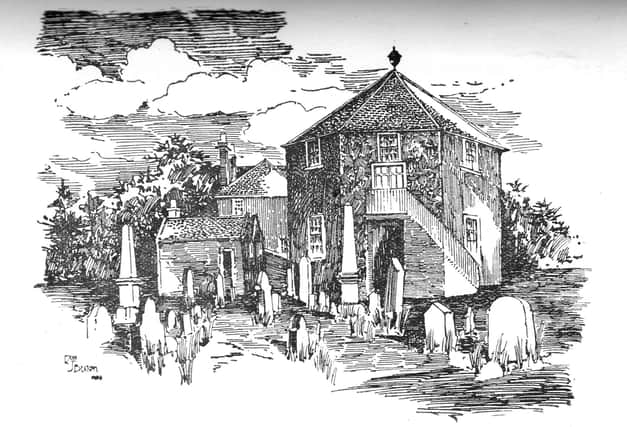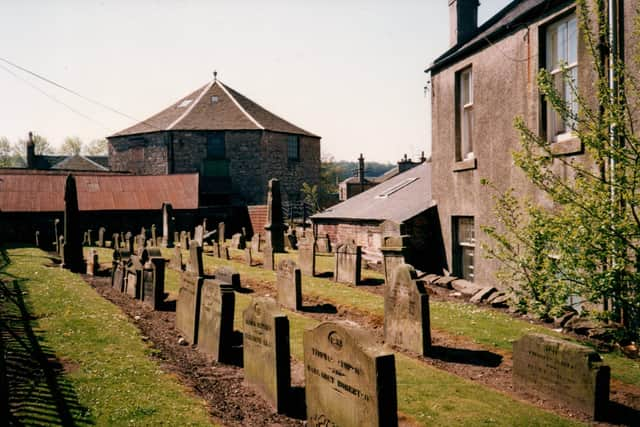Looking back with Ian Scott on the hidden history of Falkirk's Tattie Kirk graveyard


The Tattie Kirk, now separated from the graveyard, is one of Falkirk’s best known buildings and local historians are always being asked about its unusual octagonal shape, which some say was designed to ensure that ‘the Devil had no corner to hide in’, and the nickname which no one can really explain. Various suggestions have been offered – was the kirk built on a potato field? Was the Minister paid partly in potatoes? Did the congregation bring with then mashed tatties to sustain them during the very long Sunday services? Who knows!
Dating back to 1806 the building was once home to one of the breakaway congregations from the Church of Scotland which appeared in the 18th century. Ebeneezer Erskine’s original ‘secession’ had led to a new church building in Silver Row but it wasn’t long before their followers at national level fell out among themselves and the outcome was a new group known as Antiburghers who refused to take the ‘Burghal Oath’ which required magistrates and others in public office to declare their support for the ‘established’ church. They acquired land near St Crispin’s Place in the Cow Wynd in 1782 and erected a temporary church building. Two decades later and established in the community the congregation decided to build a bigger, better sanctuary and the Tattie Kirk was the result. It served until 1879 when a new building in Grahams Road was erected and the congregation, by this time known as the South United Presbyterian Church moved away leaving both graveyard and kirk building behind.
Advertisement
Hide AdAdvertisement
Hide AdThe graveyard was first laid out in 1827 and in December that year Janet Storrie became the first person to be buried there. Over the years more than 600 people followed, half of them children under the age of ten years. This was of course the period when overcrowded and insanitary towns were ravaged by cholera and typhus and whole families were decimated. Even at this distance of time it is shocking to read the names and ages on the stones and a pointed reminder of the painful reality of Victorian life.


Today only about 90 stones survive and many are in a poor condition and reading the inscriptions is difficult or impossible. Fortunately Geoff Bailey compiled an inventory of the stones and their inscriptions and this was published in the Local History Journal Calatria 12 back in 1998.
A few years ago I was disappointed that the refurbishment of the historic centre of Falkirk didn’t include the graveyard but the building itself has certainly been much improved by the new proprietors. One welcome initiative from Carrongrange School led by local historian John Walker who is a teacher there, led to the formation of the ‘Friends of the Tattie Kirk Graveyard’ with the aim of raising the profile of the place and of helping to keep it neat and tidy. With the fine weather coming they will hopefully resume their open days when we can all have another look at this bit of Falkirk’s past.